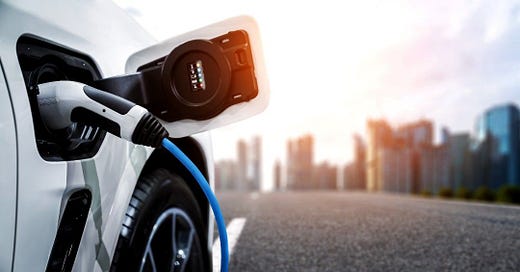Overcoming Range Anxiety in Electric Vehicles
Range anxiety persists among EV buyers but is increasingly unjustified. Learn how advancing battery tech, smarter range tools, rapid charging, and route planning can address outdated range fears.
Range anxiety is one of the most persistent fears holding drivers back from electric vehicle adoption. Despite major advances in EV technology, worries over running out of battery charge before reaching a destination stubbornly remain. This psychological hurdle stems from lack of familiarity with how modern EVs truly perform. By understanding range optimisation strategies, drivers can feel reassured that current electric vehicles offer more than enough capacity for their daily needs. This article will explore the realities behind EV range anxiety and how knowledge and preparation can conquer these outdated perceptions.
Is Range Anxiety in EVs Justified?
Thanks to continuous advances in EV battery technology over the past decade, range anxiety has become far less justified than in the early days of electric vehicles. The driving ranges of contemporary electric vehicles have increased dramatically compared to early EVs. For example, the 2023 Tesla Model 3 offers up to 358 miles on a single charge, a significant improvement over the early 2010s when sub-100 mile ranges were common.
In addition to extended range, the availability and speed of EV charging options is improving rapidly. The number of public charging locations in the UK has grown exponentially, providing more opportunities to top up when out and about. Battery charging technology enabling faster charging times has also helped minimise downtime when recharging on the go.
However, despite these advances, consumer perceptions haven't fully caught up. Range anxiety still prominently features in surveys of potential EV buyers as a top concern limiting adoption. So while the actual limitations are reducing, the psychological aspect of range anxiety persists.
What Factors Affect EV Range in Real-World Driving?
To gain full confidence in an electric vehicle, drivers should educate themselves on the factors that can impact its real-world range under different conditions:
Battery Size - The capacity of the battery pack (measured in kWh) determines range potential. Large batteries extend range but increase weight and cost.
Vehicle Weight - Heavier EVs use more power to accelerate, reducing efficiency and draining the battery faster. Lightness improves range.
Terrain and Topography - Hilly or mountainous driving requires more battery usage and decreases range. Flat terrain maximises range.
Driving Style - Aggressive acceleration and braking dramatically reduces efficiency compared to smooth and moderate driving.
Climate Controls - Heating, air conditioning, and heated seats divert battery energy from driving range. Minimising usage extends range.
External Temperature - Cold weather and extreme heat reduce battery efficiency and longevity, impacting range.
Vehicle Speed - Driving at motorway speeds compared to urban speeds consumes battery capacity faster, limiting range.
Auxiliary Systems - Headlights, sound systems, and other in-car electronics drain battery power that could go towards driving range.
Understanding how these variables impact the driving range of their specific EV model allows owners to make informed decisions about when and how to drive to optimise battery efficiency. This knowledge helps dispel uncertainty and the blind fear of unexpected drains on range.
Tools and Strategies to Alleviate Range Anxiety
EV technologies and charging infrastructure improvements have expanded to provide drivers with multiple avenues to maximise driving range and minimise interruptions to their journeys.
Sophisticated Range Estimation Tools
Modern electric vehicles are equipped with advanced sensors, mapping tools, and range estimation systems. These use driving patterns, topography, live traffic, climate control usage and other data to provide updated estimates of remaining range in real-time.
Watching estimated range fluctuate during a trip helps drivers better correlate driving variables to battery usage. Advanced regenerative braking systems also recapture energy while slowing down to extend range estimates.
Route Planning Around Charging Stations
In-car navigation systems and smartphone apps like Zap-Map allow EV drivers to plan routes that incorporate charging stops at intervals within their vehicle's range. This prevents range anxiety while in transit by ensuring drivers will pass convenient charging locations when needed.
Home and Workplace Charging
Installing wall chargers at home and/or work provides peace of mind by enabling drivers to start each day with a full battery. Having consistent charging eliminates concerns over public infrastructure availability.
Regular Charging Network Updates
Checking charger maps and staying current on new charging station installations along frequented routes keeps drivers confident in the growing public charging access.
Emerging Rapid Charging Technologies
New ultra-rapid charging systems can add hundreds of kilometres of range within 10-30 minutes. Battery-swapping stations can replace depleted packs with fully charged ones in seconds. These emerging technologies demonstrate the potential for virtually eliminating range limitations.
The Future of Range Anxiety in EVs
While range anxiety may persist among some demographic groups, predictions point towards it fading as a major barrier to mass EV adoption. Younger generations who have grown up with electric vehicles show minimal concerns over range limitations.
As battery densities continue to improve, charging rates accelerate, and charging stations proliferate, range anxiety will likely join "fuel anxiety" as a non-issue for most drivers in the not-too-distant future. In fact, the benefits of always starting each day with a "full tank" thanks to home charging may make range anxiety seem quaint.
The stage is set for driving electric to become the preferred choice for drivers across all vehicle segments. While outlying concerns over range hang on, innovative technologies and infrastructure developments are steadily liberating drivers from even having to think about miles between charges. The freedom of driving powered by electricity appears more certain than ever.
Conclusion
For those considering an electric vehicle, focusing on the actual capabilities of modern EV batteries, not outdated perceptions, shows that limitations of range are dissolving. Knowledge, preparation and embracing available tools for optimising range offer the confidence to make the switch.
As public awareness catches up to the new reality enabled by EV technological advancements, range anxiety will soon be an antiquated relic of the early electric vehicle era.






🤣